PLA Shooting Standards: Designated Marksmen Qualification
While the PLA's standards for designated marksmen is a significant increase over its basic rifle qualification, it still falls significantly short compared to its counterparts in the West.
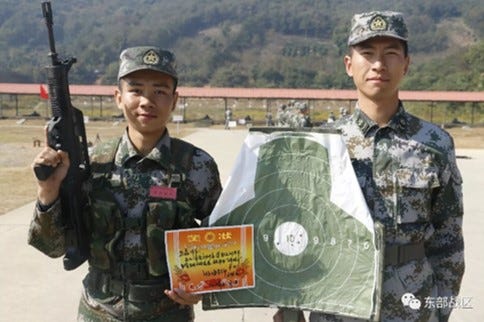
People’s Liberation Army Army (PLAA) units will usually select Designated Marksmen from soldiers who performed extremely well during rifle qualifications during boot camp. The soldiers who typically score excellent (between 18 to 20 points or hit between 45 to 50 rings) and receive ‘sharpshooter’ certificates during their qualifications.
Initial Qualifications and Training
People’s Liberation Army Army (PLAA) units will usually select Designated Marksmen from soldiers who performed extremely well during rifle qualifications during boot camp. The soldiers who typically score excellent (between 18 to 20 points or hit between 45 to 50 rings) and receive ‘sharpshooter’ certificates during their qualifications. The units will also select individuals who are physically, mentally, and emotionally fit to pass the training to become Designated Marksmen. These soldiers usually perform very well on the PLAA’s fitness test and would not have problems in passing the training regime. The soldiers would display the mental stamina and emotional capacity required to not only pass the training but also conduct the designated marksman’s mission.
The selected soldiers would then take another shooting qualification tests that consist of shooting 12 rounds – six single shots and two three-round bursts – from 100 meters. The soldiers would shoot at moving and stationary (the article used looming when describing the targets) targets during the test. The qualification’s scoring is like both pre-2018 shooting standards, with hitting the target five times is qualified, six is good, and seven shoots is considered excellent. There is no point or ring system associated with the test since it is based more on the soldier’s ability to accurately aim and shoot targets. Soldiers will shoot the same qualification tests during the training program to continuously measure their proficiency in accurately tracking and engaging targets.
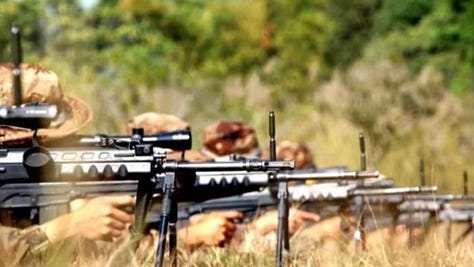


Designated marksmen training is primarily conducted at the brigade-level, like sniper training. The training consists of soldiers learning long-range shooting and scouting fundamentals in both classrooms and outside settings.
Designated marksmen training is primarily conducted at the brigade-level, like sniper training. The training consists of soldiers learning long-range shooting and scouting fundamentals in both classrooms and outside settings. Soldiers will learn and practice how to stabilize their rifles through tying brick to their rifle barrels and practice stabilizing the rifle for up to two hours. Soldiers will also stack up to four bullet casings on their barrels while they are in various shooting positions that usually last up to 30 minutes. The stacked casings force the soldiers to practice their concentration and breathing control to increase accuracy since the stacked casings are unstable.
Trainees will also conduct long-range shooting drills shooting at targets up to 700 meters away after doing various cardio or bodyweight exercises to raise their heart rates. For example, a common drill is for the solider to ran 400 meters and do 20 burpees and quickly get into the prescribed shooting, adjust their breathing, and hit all targets in the shortest time possible. The rationale behind conducting these drills is to condition the soldiers to aim and fire their rifles under ‘stressful situations.’ Soldiers will also conduct jam clearing drills while loud noises – such as artillery simulation rounds or other soldiers making loud noises – occur around them to distract them. These drills range from failure to feed, failure to extract to failure to eject that they could potentially run into during combat. The soldiers would also have to continue to observe their surroundings while they cleared the jams and wait until they are cleared by their instructors, and then hit the target in one shot.
The soldiers would also train outdoors to gain experience in operating and shooting in adverse environments such as deserts, jungles, mountains, and other high-altitude locations. The reason why is so the designated marksmen will be exposed to operating and shooting their rifles in various environments and become more proficient.
The soldiers would also train outdoors to gain experience in operating and shooting in adverse environments such as deserts, jungles, mountains, and other high-altitude locations. The reason why is so the designated marksmen will be exposed to operating and shooting their rifles in various environments and become more proficient. The trainees would then have to pass another qualification test they initially took to be selected for designated marksmen training. The same requirement regarding the number of rounds they successfully hit the targets.
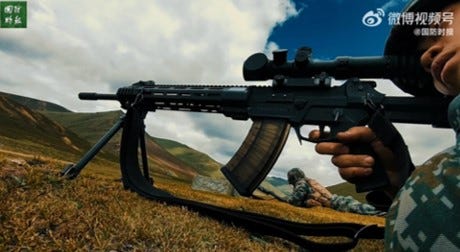
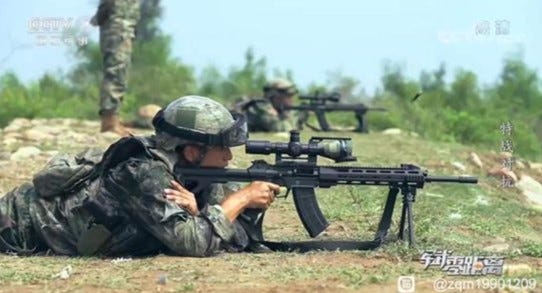
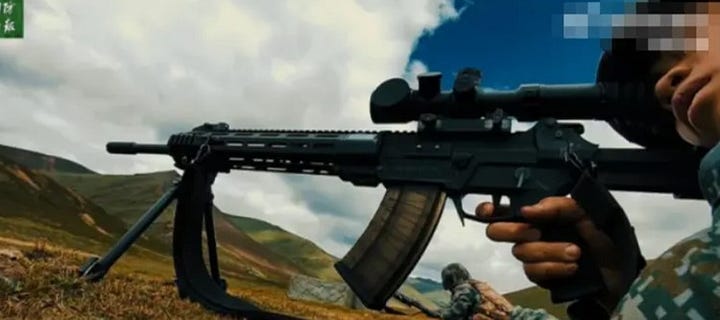
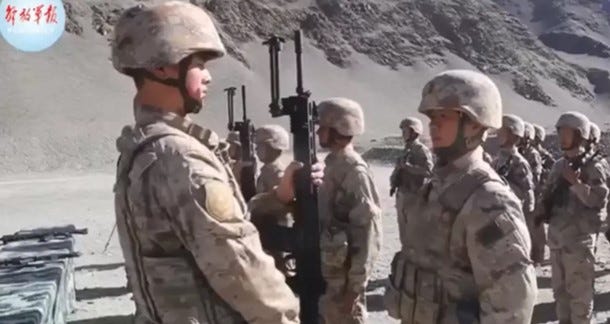
The QBU-191 Designated Marksman Rifle – also called Precision Rifle – is a variant of the QBZ-191 developed to replace the QBU-88 bullpup rifle. The QBU-191 was developed to specifically fix the QBU-88’s first outlier and poor long-range accuracy issues.
QBU-191 Designated Marksman Rifle and QMK-191 LVPO
The QBU-191 Designated Marksman Rifle – also called Precision Rifle – is a variant of the QBZ-191 developed to replace the QBU-88 bullpup rifle. The QBU-191 was developed to specifically fix the QBU-88’s first outlier and poor long-range accuracy issues. The reason for 88’s first outlier issue is due to the Type 10 5.8mm copper jackets getting hung inside barrels when shot, causing trajectory changes in the first and subsequent rounds. The poor long-range accuracy issues are mainly due to the 88’s bipod being mounted to the barrel, the lack of a heavy barrel, and the scope’s limited magnification of nine times. The PLAA increased training to compensate for the issue instead of fixing the issue.
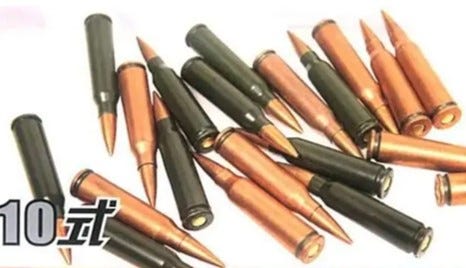
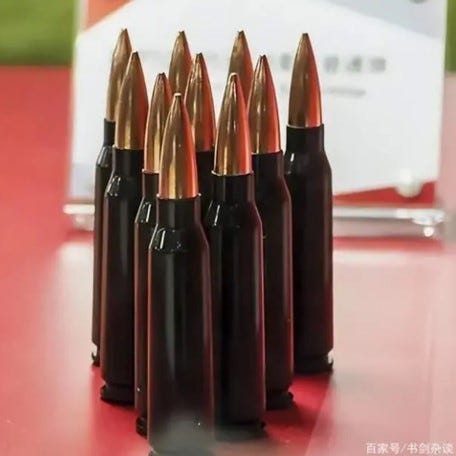
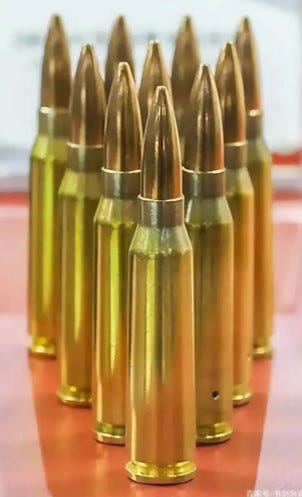
However, the QBU-191 can use three to four types of rounds, with the rifle capable of using the DBU-141 sniper bullets (match rounds), developed specifically for the QBU-141 sniper rifle. This bullet will enable the 191 to shoot with the highest level of accuracy. The QBU-191 can fire the DBP-191 round that was especially developed for the 191-family of rifles, which is reported to be optimized for long range shooting. The rifle can also first both the DBP-10 and DBP-10A 5.8mm rounds, with the DBP-10A is the bullet most used in the 95 family of rifles. While the DBP-10A bullet performs slightly worse than the DBU-141 round, it is cheaper to produce than the DBU-141 round. However, both the DBP-10 and DBP-10A rounds would produce the bullet tumble because the 191-rifle family has a different rifling in its barrel. The QBU-191 has a reported effective range of 800 meters, achieved through using a longer and heavier barrel – 470mm in length – than the QBU-88 rifle. The rifle has an extended M-LOK handguard that allows for the mounting of bipods, lights, and other equipment. In addition to single shots, the QBU-191 can also shoot sustained bursts to suppress the locations or targets. This enables the 191 to supplement or fulfill the automatic weapon function of the squad.
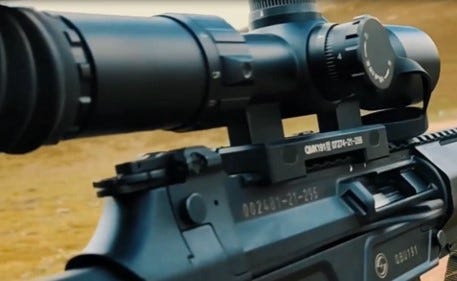
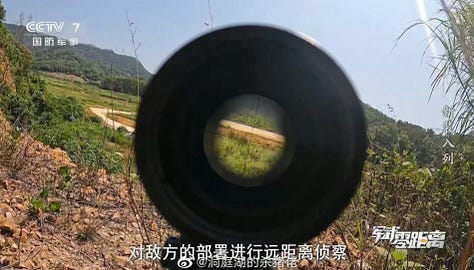

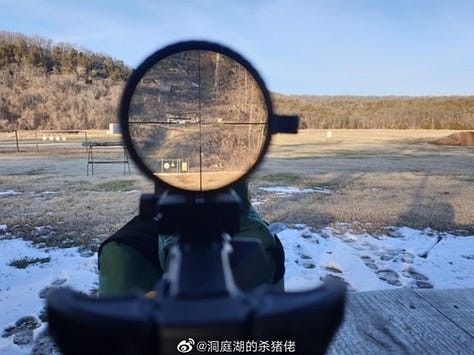


The QMK-191 LVPO is the most used optic on QBU-191 rifle when issued to various PLAA units. The LVPO specifically uses a mil hash reticle that has a variable zoom magnification of 3 to 8.6 times, allowing the QBU-191 to use its long-range accuracy to its fullest. However, rifle can mount several other optics such as the QMK-171, thermal sights, and other rifle scopes.
The QMK-191 LVPO is the most used optic on QBU-191 rifle when issued to various PLAA units. The LVPO specifically uses a mil hash reticle that has a variable zoom magnification of 3 to 8.6 times, allowing the QBU-191 to use its long-range accuracy to its fullest. However, rifle can mount several other optics such as the QMK-171, thermal sights, and other rifle scopes. While some scopes – such as the QMK-171 – lack the magnification to use the QBU-191 to its fullest extent; other optics will likely provide comparable magnification to the QMK-191.
Analysis: While the qualification to become a designated marksman in the PLAA are more stringent than its rifle qualification, there are several limitations, especially compared its comparative programs in the United States Army, USMC, and the Australian Defense Force. The most significant of these limitations is the lack of a formal syllabus or requirements beyond its shooting qualification test. The lack of any formal syllabus prevents the PLAA from creating a uniform designated marksman course that provides PLAA units with uniformly trained personnel to fulfill the designated marksmen role. The lack of any formal training requirements means the level and skills of designated marksmen will differ significantly depending on the brigade. For example, designated marksmen trained by Western Theater Command brigades will be more proficient at operating and shooting in arid environments compared to their counterparts in other theater commands. While these designated marksmen will be very proficient at operating in one or more environments, they would lack experience and knowledge in operating in other environments such as jungles or mountains. Another limitation would be the units would have developed different SOPs and techniques that would vary widely not only between Army Groups but among individual brigades as well.
The comparatively low ammunition the designated marksmen shoot during the training program is also significant since this prevents them from becoming proficient with the QBU-191. The low ammunition also means that the sharpshooters will have less experience in terms of engaging targets even if they still replicate realistic combat scenarios on ranges. The low ammunition use likely means the PLA supplements using simulators like to the United States Marine Corps Indoor Simulated Marksmanship Training (ISMT) and similar devices. While the use of these simulators allows for the designated marksmen to train without physically shooting ammunition, it causes significant issues for them. The most glaring issue is that the sharpshooters would not receive any ‘real world’ experience in engaging targets using simulators. Like the low amount of ammunition they shoot, it will prevent the sharpshooters from becoming familiar and proficient with the QBU-191. Another issue with using the simulators is that the designated marksmen will practice under what would be considered laboratory settings and not gain any of the lessons their western counterparts gain when shooting at ranges.
The QBU-191 rifle will provide a significant advantage over the QBU-88 because it eliminates the two limitations associated with the rifle, the lack of long-range accuracy and first outlier effect. The rifle further mitigates the first outlier issue by having the ability to use four different 5.8mm rounds instead of the DBP-88. However, both the DBP-10 and DBP-10A would likely cause the QBU-191 to have significant accuracy and performance issues since those rounds were not specifically made for use with the 191-family. The rifle will provide squads with increased flexibility since it will fulfill both designated marksmen and machinegun roles at the squad level like the USMC’s M27 Infantry Automatic Rifle. The QMK-191 LPVO also eliminates the limitation found in the QBU-88 regarding its scope’s limited magnification. However, the 191 can also mount various other optics – such as thermal, other rifle scopes, and non-magnified optics like the QMK-171 – that provide it with increased flexibility in tracking and engaging targets.



